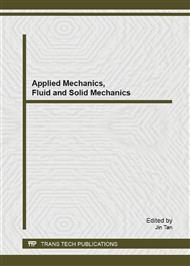p.147
p.152
p.159
p.164
p.171
p.179
p.184
p.189
p.194
Studies on Exciting the Activity of Waste Glass Powder by Hydrothermal Activation
Abstract:
The effect of hydrothermal activation indifferent temperature and pressure conditions on the pozzolanic activity of waste glass powder was discussed. The waste glass powder was treated at 108°C, 0.15MPa, 116°C, 0.18MPa and 121°C, 0.2MPa for 2h in an autoclave respectively after milling to 4215cm2/g. Mortar was made with untreated and hydrothermal activated waste glass power replacement of cement at 20% respectively, then tested for compressive strength at 3, 7, 14 , 28 and 90 days. Results showed that compressive strength of cement mortar had varying degrees of decline when replacing cement with untreated waste glass powder, comparing to the control one. Decline amplitude was large at early age and small at late age. Activity of waste glass powder was significantly improved after hydrothermal treatment. Compressive strength of mortar improved as temperature and pressure elevated, obtaining optimal strength at 121°C, 0.2MPa. Compressive strength of mortar with hydrothermal activated glass powder was higher than that with untreated glass powder at all age with 20% cement replacement. Compressive strength increased 5.3% ~ 13.6% at 3 d, 6.8%~9.7% at 28 d, 9.7% ~ 17.7% at 90 d. The essence of hydrothermal activation was the corrosion of water in the glass.
Info:
Periodical:
Pages:
171-178
Citation:
Online since:
December 2013
Authors:
Price:
Сopyright:
© 2014 Trans Tech Publications Ltd. All Rights Reserved
Share:
Citation:


